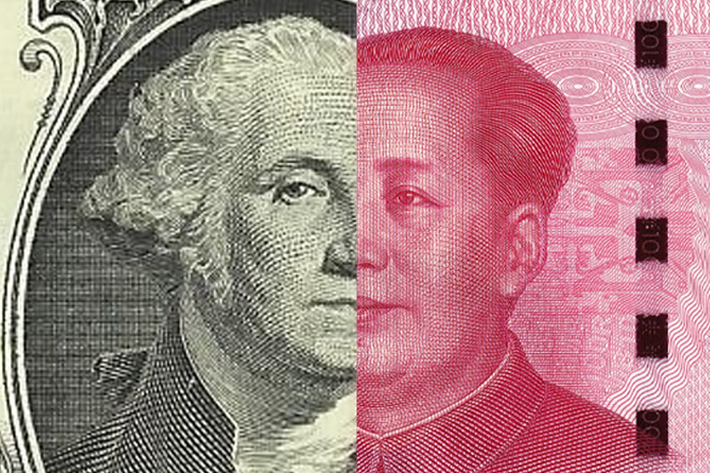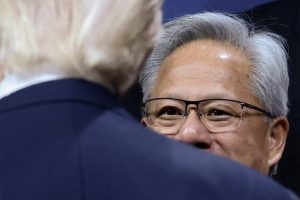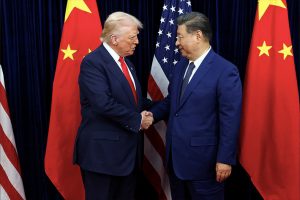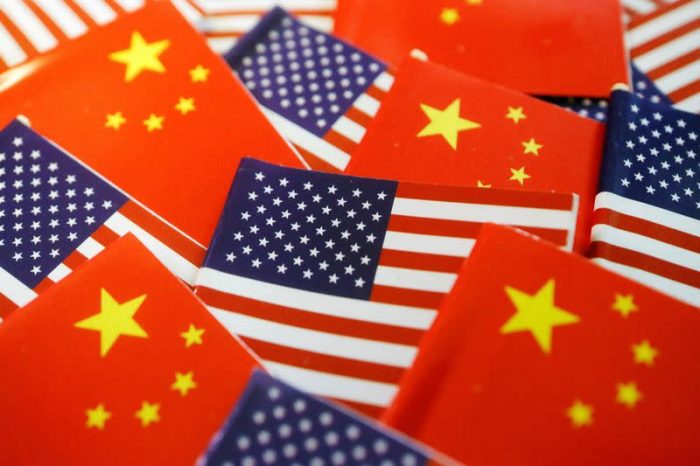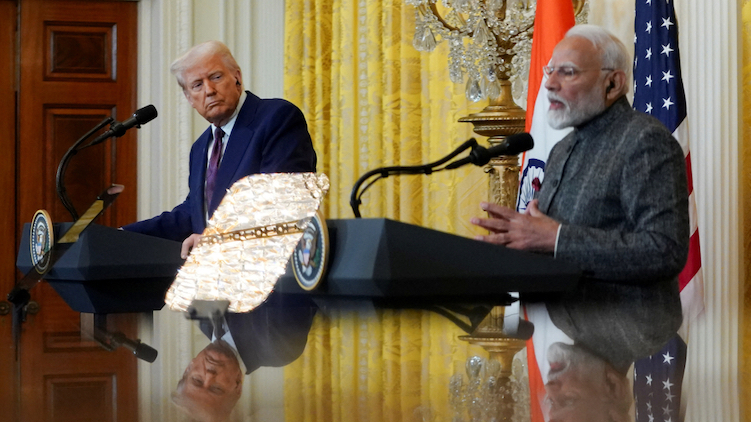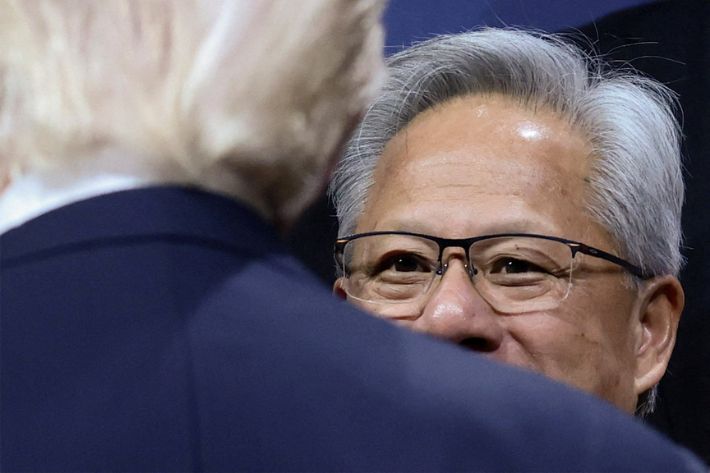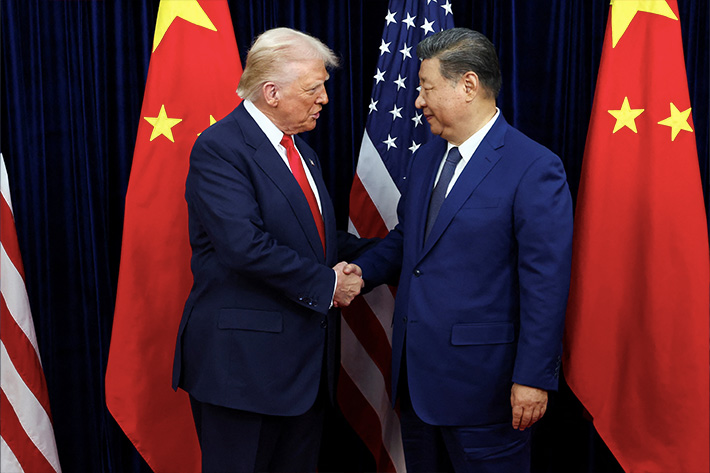China is using the weakening momentum of the dollar to strengthen its case for a global yuan and pitch its currency as a ‘safer’ alternative.
Early this month, the country’s central bank — the People’s Bank of China — announced several steps to promote cross-border yuan settlement and other financial services, especially in Southeast Asia, while Xi Jinping was touring the region.
In the backdrop of Xi’s trip — meant to unite SE Asia in the face of US President Donald Trump’s tariff assault — PBOC-controlled financial services firm China UnionPay was promoting QR-code payments in Vietnam and Cambodia.
Also on AF: China Unveils Propaganda Video, Vows to ‘Never Kneel’ to Bullies
The payment system should facilitate transactions for tourists and small businesses, reducing reliance on the dollar.
The UnionPay deals are meant to build out a network that now extends to more than 30 countries outside China. And they represent one end of a push to expand the yuan’s reach as an international trading, spending and investment currency.
At the other end of the push are a range of efforts by the PBOC to make the yuan truly international.
These include the banks’ offshore yuan standby currency swaps with other central banks that hit a record 4.3 trillion yuan ($591.2 billion) by value in February, cross-border commodity trades settling in digital yuan and efforts to price everything from oil to gold in the Chinese currency.
It is important to note here that yuan is by no means close to de-throning the dollar. But it speaks to China, and the PBOC, seizing a moment of confusion and disruption in global trade to promote greater usage of the yuan.
Besides, analysts say there is renewed appetite for a global yuan as aggressive tariffs shake faith in the US currency and other US assets.
A Commerce Department report on Wednesday showed that the US economy contracted in the first quarter of 2025 — a first in three years. The contraction came on the back of a surge in imports, as buyers looked to get ahead of massive new tariffs.
‘Need better financial systems’
The moves also highlight China’s desire for a financial architecture independent of the West – and US banks – at an inflection point for markets as US President Donald Trump spurns his own trading partners and drives a scramble to reroute trade.
“The United States weaponising tariffs has cast doubt over US asset safety, undercut trust in the dollar, and shaken the greenback’s global status,” E Yongjian, vice general manager of Bank of Communications’ research department told a seminar on yuan internationalisation.
“That, in turn, has made yuan assets more attractive, and will help broaden cross-border use of the Chinese currency.”
China’s central bank announced steps this month to beef up cross-border financial services in Shanghai and encouraged companies to prioritise yuan usage in payment and settlement.
Cross-border yuan payments surged to a record in March.
The PBOC also pledged to strengthen its homegrown cross-border yuan payment system CIPS, and push forward with the application of blockchain – the technology on which its digital yuan is based.
Chinese companies which are stepping up overseas investment are demanding better financial systems as “unilateralism, protectionism … and higher tariffs impact the global supply chain,” PBOC vice governor Lu Lei told a press conference this month.
‘East rising and west declining’
China has long harboured ambitions for the yuan to be a global currency, similar to the euro or dollar and reflective of the importance of the world’s second-biggest economy.
But progress has always been hampered by unwillingness to open a capital account, which limits the usefulness of owning the yuan, if it can’t be freely moved out of China and around the world.
There’s no sign of that changing. But progress on other fronts, where it has gained in places such as Russia and other trading partners, stands to accelerate.
In his first 100 days in office, Trump has put the highest tariff walls around the US economy in more than a century and upended parts of the world order that Washington helped build, raising the prospect of recession.
Meanwhile, China has sought to shore up trade with other countries.
“If the US enters recession, and China gains the upper hand in this round of Sino-US rivalry – a scenario dubbed “East rising and West declining” – that’s indeed good for the yuan over the long term,” Qu Fengjie, a researcher at the National Development and Reform Commission (NDRC), the country’s top planning agency, told a recent seminar.
“China can break the old order of the international monetary system.”
To be sure, no currency can yet come close to challenging the dollar, which comprises nearly half of global payments, according to SWIFT, and more than 80% of trade financing.
Demand, and skepticism
The yuan has risen to fourth in global payments, but it is a distant ranking, comprising 4%, and some say distrust in the dollar is likely to drive up usage of other currencies, in particular the euro, well before the yuan.
“The yuan has been weak for many years, so there’s no clear upside” to hold the Chinese currency for investors or central banks, Alicia Garcia Herrero, chief Asia Pacific economist at Natixis, said.
Still, she sees China’s deepening ties with other emerging markets and ‘Global South’ countries as likely to drive yuan use and there are signs of demand.
In April, Argentina renewed a $5 billion portion of a yuan swap line and Pakistan is lobbying to expand its own yuan swap line. Bilateral currency swaps can facilitate trade and investment and are a useful addition to the global financial safety net, Governor Pan Gongsheng said last year.
“The US-dominated global monetary system is getting more and more fragile,” Tu Yonghong, a finance professor at Renmin University of China, said.
China should “grasp this good opportunity,” he said.
“This will boost use of the yuan, given the size of China’s trade with other countries.”
- Reuters, with additional editing by Vishakha Saxena
Also read:
China’s Factory Activity Falls as US Tariffs Kill Export Orders
China ‘Compiling a List of US Goods Exempt From Its 125% Tariffs’
China’s Yuan, US Treasuries Become Victims of Market Turmoil
China Central Bank ‘to Allow a Weaker Yuan’ as Trade Risk Rises
China’s Yuan Leapfrogs Yen in Global Payments Rankings – FT
US And China ‘Stuck in an Expensive Game of Chicken’ – Nomura
China ‘More Vulnerable to Trump Tariffs’ After Slowdown




